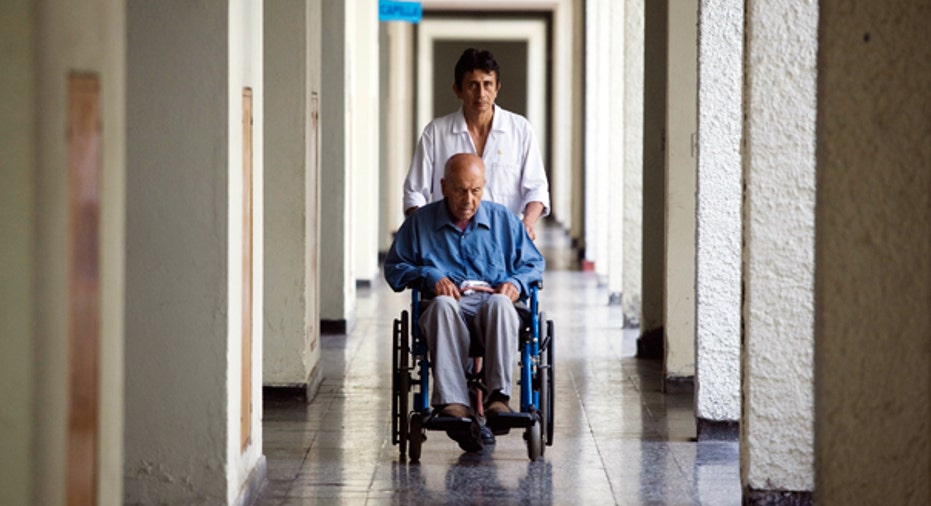Most of Us Have No Idea How Much a Nursing Home Costs

Confronting the costs of retirement is often like driving on a quiet road that leads toward a cliff. Everything seems just fine -- until it suddenly doesn't.
One of the biggest "cliffs" of this sort appears when the time comes to enter an assisted living or skilled nursing facility. Unfortunately, few Americans seem to be preparing for this possibility: A new survey conducted for MoneyRates.com finds that most Americans badly underestimate the costs of nursing-home care and are neglecting the need to save for it.
An Overlooked Expense
Here are some of the important issues raised by the survey's results:
Most people underestimate the cost of nursing-home care. According to the MoneyRates.com survey, nearly 57% of Americans believe a year in a nursing home would cost less than $75,000. A study by MetLife found that the actual cost of a semi-private room in a nursing home comes to an average of $81,030 a year. For a private room, that jumps to $90,520. So most people are in danger of saving less than is necessary to meet this need.
People in some regions may be drastically underestimating the cost. Nursing-home costs vary greatly from region to region, so not only is the average person underestimating the cost of a nursing-home stay, but in some areas they may be off by tens of thousands of dollars. For example, while the national average for a semi-private room is $81,030 a year, in the New York City area the average cost is $141,620.
People are confused about the relative costs of assisted-living and nursing-home care. Survey responses about the estimated cost of assisted living were almost identical to those about the cost of a nursing home, when in fact assisted-living care costs roughly half of what nursing-home care costs. Why is it important for people to realize this? Some wise planning could allow you to stay in assisted living longer and thus preserve more of your savings.
Two-thirds of Americans do not have enough set aside for one year in a nursing home. Forty percent of survey respondents have set aside nothing for elder care, and a total of 67% have less than $75,000 set aside. There are safety nets such as Medicaid to help in these situations, but Medicaid applies only after you have substantially depleted your net worth. Plus, paying for assisted living with Medicaid can limit your options, including which facilities will accept you. It may also only pay for a semi-private room instead of a private room.
Long-term care insurance may or may not be the answer. Twelve percent of respondents are counting on long-term care insurance to take care of their elder care expenses. Insurance can be a good way of meeting the rising costs of this kind of care, but be sure you check the details, such as how much your policy will provide annually, and what types of care are eligible. Also, if you are receiving long-term care insurance through work, find out what will happen to your coverage when you retire. This is when you are most likely to need it.Men and women are about equally naive about nursing-home costs. Fifty-six percent of women and 58% of men incorrectly believe that a year in a nursing home costs less than $75,000. In other words, men and women are both usually wrong about this.
Men are more likely to have money set aside for elder care. While men are slightly more likely than women to underestimate the cost of elder care, at least they are more likely to have saved for it. Fifty percent of women surveyed have set aside nothing for this eventuality, compared to 31% of men.
"We grow too soon old, and too late smart." That phrase is an old Pennsylvania Dutch saying, and it accurately describes how people tend not to recognize the full cost of elder care until it is too late. Most people age 55 and older recognize that a year of nursing care costs more than $75,000. Unfortunately, in each of three younger age groups surveyed, most believe the cost is less than $75,000. Why is it important for these younger groups to accurately assess the costs, when their need for nursing care is likely to be decades off? Because time is your most valuable ally in saving the money necessary to meet these expenses. Starting to save when you are young greatly increases your chance of having enough to afford the proper care when the time comes.
Having to enter an assisted living or skilled nursing facility can be a very emotional decision. Knowing what costs to expect and how you will pay for them can prevent financial stress from adding to these difficult emotions.
Methodology
This survey was collected for MoneyRates.com by Op4G in April 2014. It surveyed 2,000 U.S. respondents age 25 or older. The respondents were split evenly between men and women.
You may also like:
The best savings account rates: What savers should know
Money market accounts: A good choice for your IRA?
The original article can be found at Money-Rates.com:Survey: Most Americans underestimate nursing-home costs